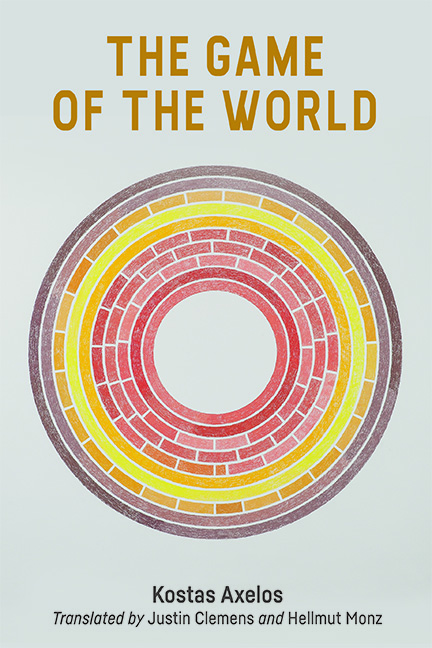Book contents
- Frontmatter
- Contents
- Translators’ Introduction
- Prelude
- Opening. The Great Powers and the Elementary Forces of the World
- I Logos. The Language and Thought of Man and the World
- II That. The Play of the Being in Becoming of the Fragmentary and Fragmented Totality of the Multidimensional and Open World
- III God-Problem
- IV Physis. The Cosmic World
- V The Human in the World
- VI World History
- VII The World of Poetry and Art
- VIII Being-Nothingness, Everything-Nothing, the Unworldly World
- IX The Game of the World
- Notes
- Analytical Table
VII - The World of Poetry and Art
Published online by Cambridge University Press: 17 November 2023
- Frontmatter
- Contents
- Translators’ Introduction
- Prelude
- Opening. The Great Powers and the Elementary Forces of the World
- I Logos. The Language and Thought of Man and the World
- II That. The Play of the Being in Becoming of the Fragmentary and Fragmented Totality of the Multidimensional and Open World
- III God-Problem
- IV Physis. The Cosmic World
- V The Human in the World
- VI World History
- VII The World of Poetry and Art
- VIII Being-Nothingness, Everything-Nothing, the Unworldly World
- IX The Game of the World
- Notes
- Analytical Table
Summary
When speaking of art, we – all of us, producers and consumers of art – think of poetry and prose (what we call literature), of theatre, of music and dance, of painting, of sculpture and architecture, and finally of the graphing of movement, that is to say, of cinematography. All these forms and works of art possess a ‘common’ focus, and specific problematics, although surrounded, can be multiply interpreted, emerge – creations (artificial and artistic) – through poetic saying and doing, constitute a world in the World, namely a mode of being of the totality, and constitutively form at the same time the world. What however is their ‘unitary’ root, and what is art?
All the particular configurations of poetry and art imply a specific and quasi-autonomous problematic.
Poetically and artistically, the how is at least as important as the what.
This history of the distinction, of the unity or the identity between form and content is troubling, since they are neither identical nor different.
As long as the original bonds which unite physis (nature) and techné (art-and-technique) remain completely hidden, we will only speak and write intelligent or stupid things about poetry and art.
A word already pronounced says: ‘Art and technique are much weaker than necessity.’
The work – mobile – creates and makes its listeners, spectators, readers, destroyers, and is created and made by them. Because works of art are also made by the waves and vogues, the currents and counter-currents, simultaneous and successive, of listeners, spectators, readers, in short, of consumers.
We make the question concerning art – a question that nonetheless concerns us – easy by following art into its history, from prehistoric times up to now, by grasping also the becoming of every art historically, and by going so far as to envisage the fabrication of a museum of future art. Thus the reign of art history is constituted, a history unfolding itself in the four-dimensional space-time continuum that we strive to explore through archaeology, philology, in short, the history of art as science and technique. Caves, temples, palaces, churches, castles – all fitted out – and especially museums and exhibition halls become the ‘places’ of domesticated and catalogued art, which are visited and studied by tourists and amateurs, investigators and researchers.
- Type
- Chapter
- Information
- The Game of the World , pp. 361 - 380Publisher: Edinburgh University PressPrint publication year: 2023

